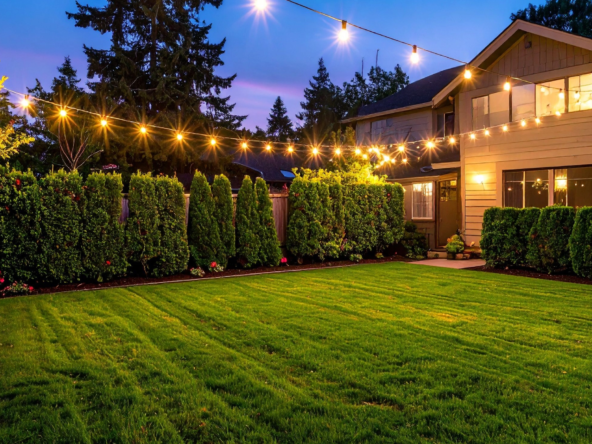TLDR
- Mortgage rate shifts change payments and buying power, directly influencing achievable sale prices.
- Tight Eagle inventory magnifies rate impacts, sustaining prices but widening appraisal gaps.
- Smart pricing, seller credits, and buydowns help protect your net proceeds when listing.
- Neighborhood dynamics differ, so tailor strategy around Legacy, Two Rivers, Brookwood, and Lexington Hills.
What does “affordability” really mean for Eagle sellers right now?
Affordability is the relationship between the price of a home, prevailing mortgage rates, and a buyer’s income. In Eagle, that balance is shaped by tight inventory, strong household incomes, and neighborhood-specific demand near the Eagle Road and State Street corridors. As an Eagle Idaho realtor, I watch how small changes in rates alter monthly payments, expand or shrink the buyer pool, and ultimately influence offers, concessions, and appraisal outcomes.
Local MLS data shows a market with limited selection and steady values. Recent stats include roughly 270 active listings in Eagle and a median sale-to-list ratio near 0.986. Days to pending have hovered around the 39-day mark, which is a moderately brisk pace. These are seller-favorable signals, but they do not immunize a listing from interest rate swings. When rates rise, some buyers delay or trade down in price, and that can play out as fewer showings and tighter appraisal margins.
Here is how I define it as Chris Budka:
- Affordability is not only price, it is price plus rate plus taxes and insurance.
- Rate changes move monthly payments, which changes the size and urgency of your buyer pool.
- Pricing, concessions, and timing must align with current rate conditions to protect net proceeds.
How do interest rates actually change buying power in Eagle?
Mortgage rates impact monthly payments more than any other single factor. A 1 percent change in rate can shift a buyer’s purchasing power by roughly 7 to 10 percent, depending on down payment and term. For example, on a $800,000 home with 20 percent down, a move from 6 percent to 7 percent can add several hundred dollars to the monthly payment. That difference may push a buyer out of a price tier or force them to adjust contingencies.
To monitor the environment, I rely on trusted data. You can track the national 30-year fixed rate trend via FRED’s MORTGAGE30US series, and the broader rate backdrop via the Effective Federal Funds Rate. Home values over time can be benchmarked with the FHFA House Price Index, which includes the Boise metro. These sources help sellers understand why buyer behavior changes week to week.
Nationally, NAR’s monthly reports provide context for inventory, days on market, and buyer traffic. See the latest releases under Existing-Home Sales. Locally, Intermountain MLS data shows that Eagle’s demand remains steady due to high-income households and limited new resale inventory, yet showings and multiple-offer intensity ebb and flow with every meaningful mortgage rate shift.
How tight inventory amplifies rate shocks in Eagle
When inventory is lean, rate increases do not necessarily cut prices instantly. Instead, they change the composition of demand. Some move-up buyers pause, while cash and well-qualified buyers gain leverage. With roughly 2.9 months of inventory statewide recently, many Eagle listings still attract solid activity, but sellers may see fewer high-escrow offers or a wider gap between list and appraisal if pricing runs ahead of rate-driven buyer capacity.
Where do rate dynamics matter most in Eagle’s neighborhoods?
Different neighborhoods react differently to rate noise because of price points, amenities, and buyer profiles. Near my office at 408 S Eagle Rd, Suite 205, I closely watch activity in Legacy, Two Rivers, Brookwood, Lexington Hills, and Banbury Meadows. These communities highlight how pricing tiers and amenities interact with financing.
- Legacy
– Details: Master-planned community with lakes, pathways, and access to the Boise River corridor. Prices often sit in the upper-middle tier for Eagle ID homes for sale. – Watchouts: Appraisal gaps can occur when rates rise quickly and comps lag. – Typical timeline: 30 to 45 days from list to close if priced with current comps and rate conditions.
- Two Rivers
– Details: Luxury waterfront and greenbelt access with premium finishes and larger lots. High-income, discretionary buyers remain active. – Watchouts: Buyers may push for credits or rate buydown in higher rate periods to offset jumbo loan payments. – Entry-level path: Consider nearby Lexington Hills or Brookwood for a more attainable alternative while enjoying established landscapes and parks.
- Brookwood
– Details: Mature landscaping, community pool, proximity to Eagle Road conveniences and the Downtown Mobility Improvements in progress. – Watchouts: Dated interiors can elongate market time if not refreshed or priced accordingly. – Typical timeline: Roughly 35 to 50 days list-to-close with thoughtful staging and cosmetic updates.
- Lexington Hills
– Details: Established neighborhood with trails and park spaces, attractive to families seeking West Ada schools. – Watchouts: Rate increases can reduce the size of the family-buyer pool, especially those stretching budgets. – Entry-level path: Smaller floorplans or townhome options elsewhere in Eagle can keep payments manageable without leaving the city.
As a Best Realtor in Eagle Idaho, I tailor advice to your neighborhood’s comps, buyer demographics, and how rates are shaping active demand that week.
What are the pros and cons of selling into a higher-rate market?
Pros:
- Fewer competing listings can boost visibility and protect your pricing power.
- Well-qualified and cash buyers hold steady, particularly in premium Eagle enclaves.
- Credits and buydowns can attract buyers without major price cuts.
Cons:
- Payment sensitivity reduces the number of qualified buyers at each price tier.
- Appraisal risk can rise if pricing chases recent highs while rates climb.
How do I price and structure a sale to offset rate headwinds?
The blueprint is simple: perfect the product, price precisely, and deploy financing tools where they deliver the best return. Start with a pre-inspection to eliminate last-minute surprises and present your home as move-in ready. A typical pre-inspection in Eagle runs about $350 to $500. Light cosmetic updates, deep cleaning, window washing, yard refresh, and professional staging often cost $1,500 to $4,500 and can materially shorten days on market.
On pricing, I use real-time Intermountain MLS activity to bracket value. If rates have ticked up in the last two weeks, we may tighten the initial price band or position slightly below recent comps to spark traffic. Small pricing adjustments are often more efficient than large concessions later.
Seller credits and buydowns are powerful levers:
- A 2-1 temporary buydown can cost roughly 2 percent of the loan amount and reduce the buyer’s payment for the first two years.
- A permanent buydown often costs about 1 percent per point for a 0.25 to 0.375 rate reduction, depending on market.
- Closing cost credits in the 1 to 3 percent range can help buyers cover third-party fees and prepaids.
One of my clients in Legacy faced rising rates during their launch week. Rather than chasing the market down with a price cut, we offered a 2-1 buydown plus $5,000 in closing costs, capped the inspection items, and reinforced value with recent neighborhood comps. The home went pending in 12 days.
Another client in Brookwood considered waiting for spring. We listed in late fall with fresh paint, targeted photography of the greenbelt access, and a modest permanent buydown credit. Despite a smaller buyer pool, we attracted two qualified offers and negotiated repairs up front, closing in 34 days. For home selling in Eagle Idaho, planning the financing story is often as critical as pricing.
To widen the buyer pool, I also educate lenders and buyers about local programs:
- Idaho Housing and Finance Association Down Payment Assistance can support qualified buyers.
- The BCACHA Homeownership Programs expand access for eligible households.
- The Ada County Homestead Exemption can reduce property tax burdens for owner-occupants.
FAQs
1) Should I wait to sell until mortgage rates drop? Not necessarily. If inventory remains lean, your leverage may persist even with higher rates. Waiting could invite more competition and compress your negotiating power. I suggest testing the market with strong presentation, precise pricing, and strategic credits or buydowns. We will watch FRED mortgage trends weekly and adjust quickly based on showings, feedback, and nearby pendings.
2) How much does a seller rate buydown usually cost, and is it worth it? A temporary 2-1 buydown often runs near 2 percent of the buyer’s loan amount. A permanent buydown point is roughly 1 percent of the loan for a fractional rate drop. These tools can be less costly than a large price cut and can help buyers qualify or feel comfortable at your list price. I will price-test both options to find the best net proceeds.
3) What if my home does not appraise due to higher rates? We prepare early to avoid surprises. I provide the appraiser with a comp package, upgrade list, and neighborhood context. If the appraisal comes in low, we can request a reconsideration, adjust price, or add concessions to bridge the gap. Tight inventory helps, but rates can strain appraisals, so supporting documentation is critical.
4) How long should I expect from list to close in Eagle? With proper prep and pricing aligned to current rates, many Eagle listings go pending in about 2 to 6 weeks, then close in another 30 days depending on financing and title timelines. The local average to pending has hovered near 39 days. Cash deals can close faster. Jumbo loans or complex contingencies may extend timelines slightly.
5) Can an ADU help buyers afford my home, and what should I know? Yes, potential rental income from an accessory dwelling unit can improve buyer affordability and debt-to-income ratios. Eagle has specific ADU standards, so I advise confirming eligibility with the City. Start with City of Eagle Planning & Zoning to verify lot, size, and design requirements. We can position the ADU as income potential while keeping appraisal and lender rules in mind.
Conclusion
The bottom line Interest rate fluctuations change monthly payments, buying power, and buyer psychology. In Eagle, tight inventory and high-demand neighborhoods like Legacy, Two Rivers, Brookwood, Banbury Meadows, and Lexington Hills often cushion price pressure, but rates still affect showings, appraisals, and concessions. The solution is strategic: sharp presentation, laser pricing, and the right mix of credits or buydowns. Track national mortgage trends through FRED, benchmark values via FHFA HPI, and watch local comps closely. If you want a data-driven plan from a Best Realtor in Eagle Idaho who understands Eagle ID homes for sale, I am ready to help.










